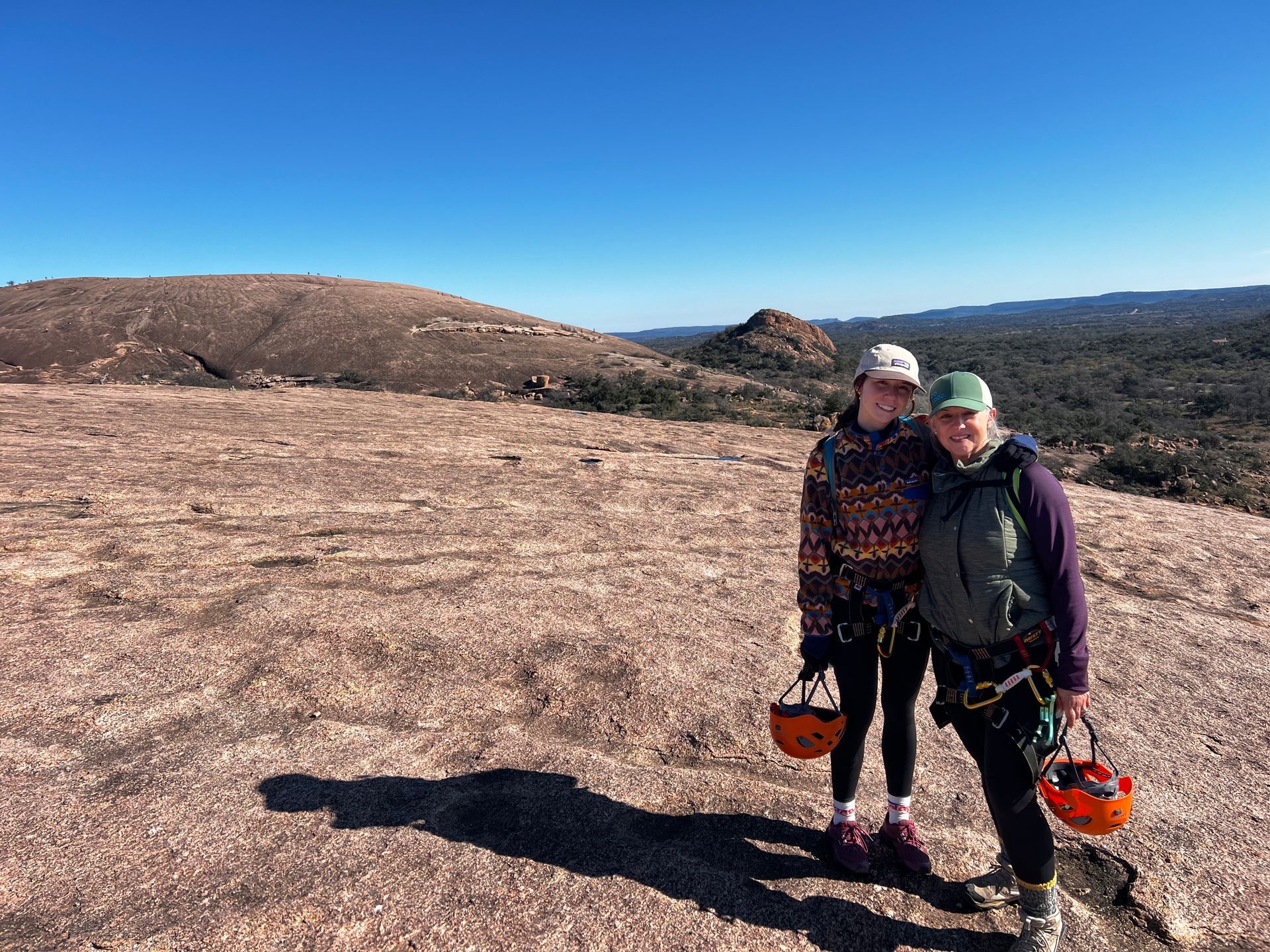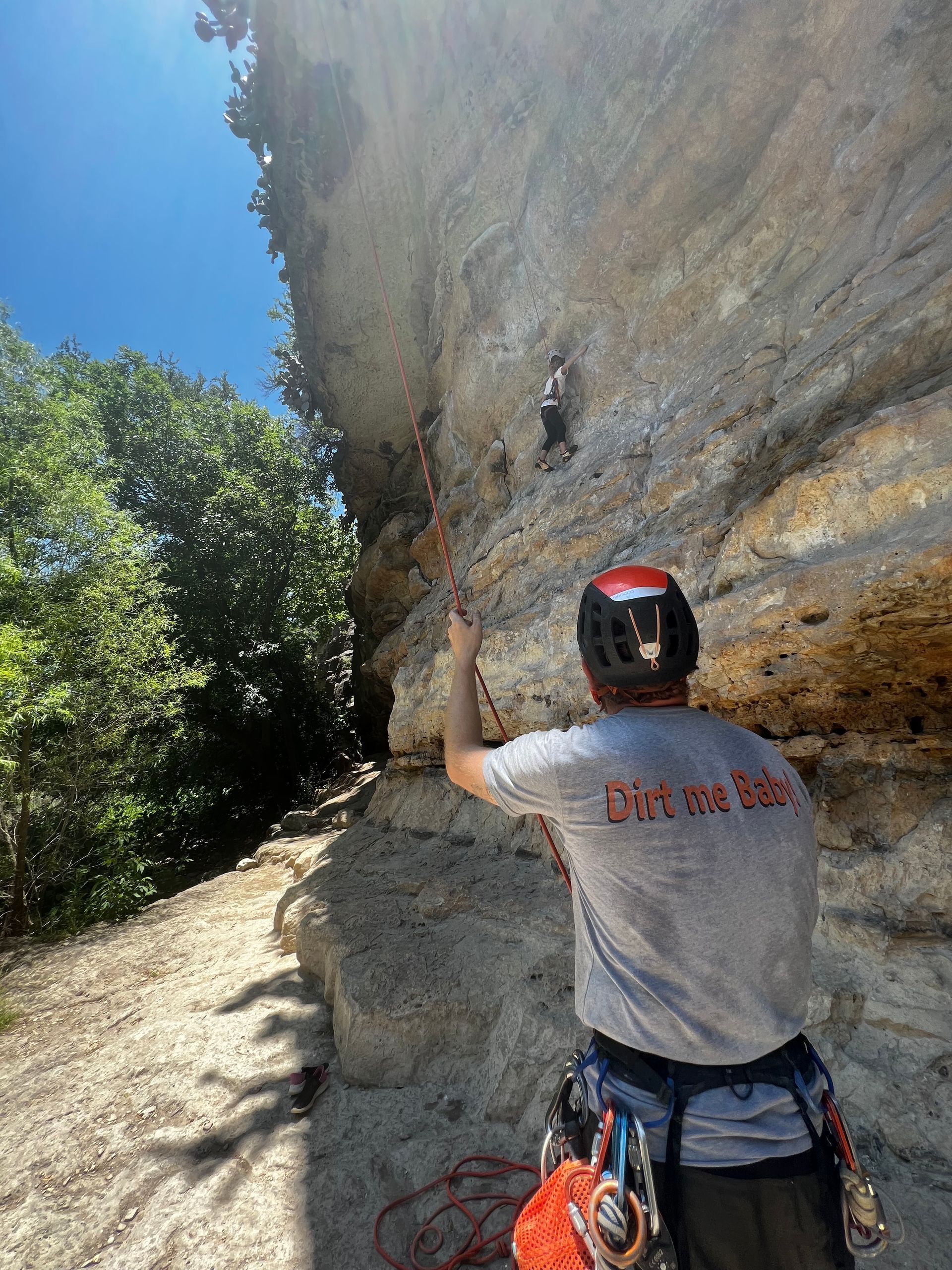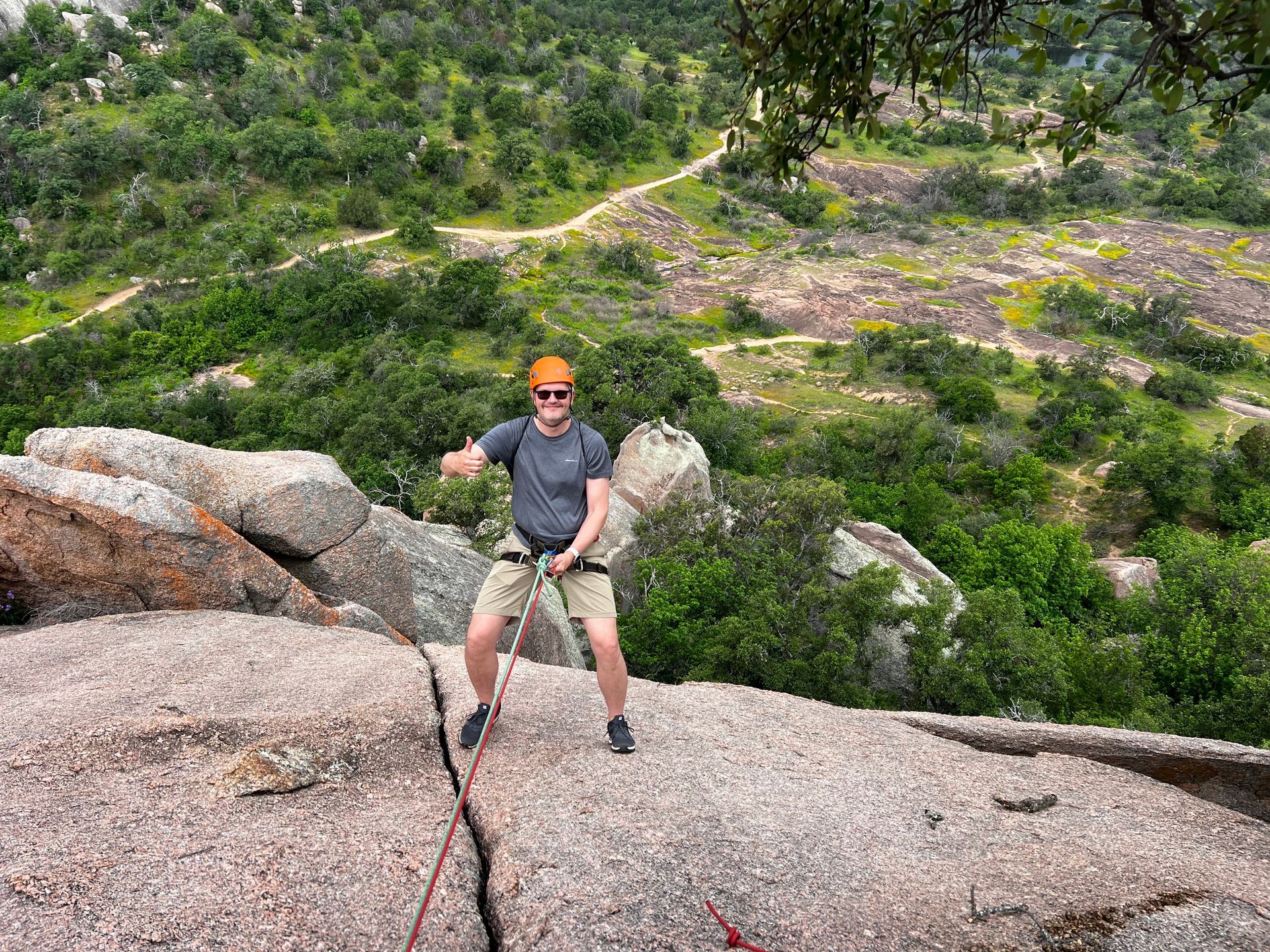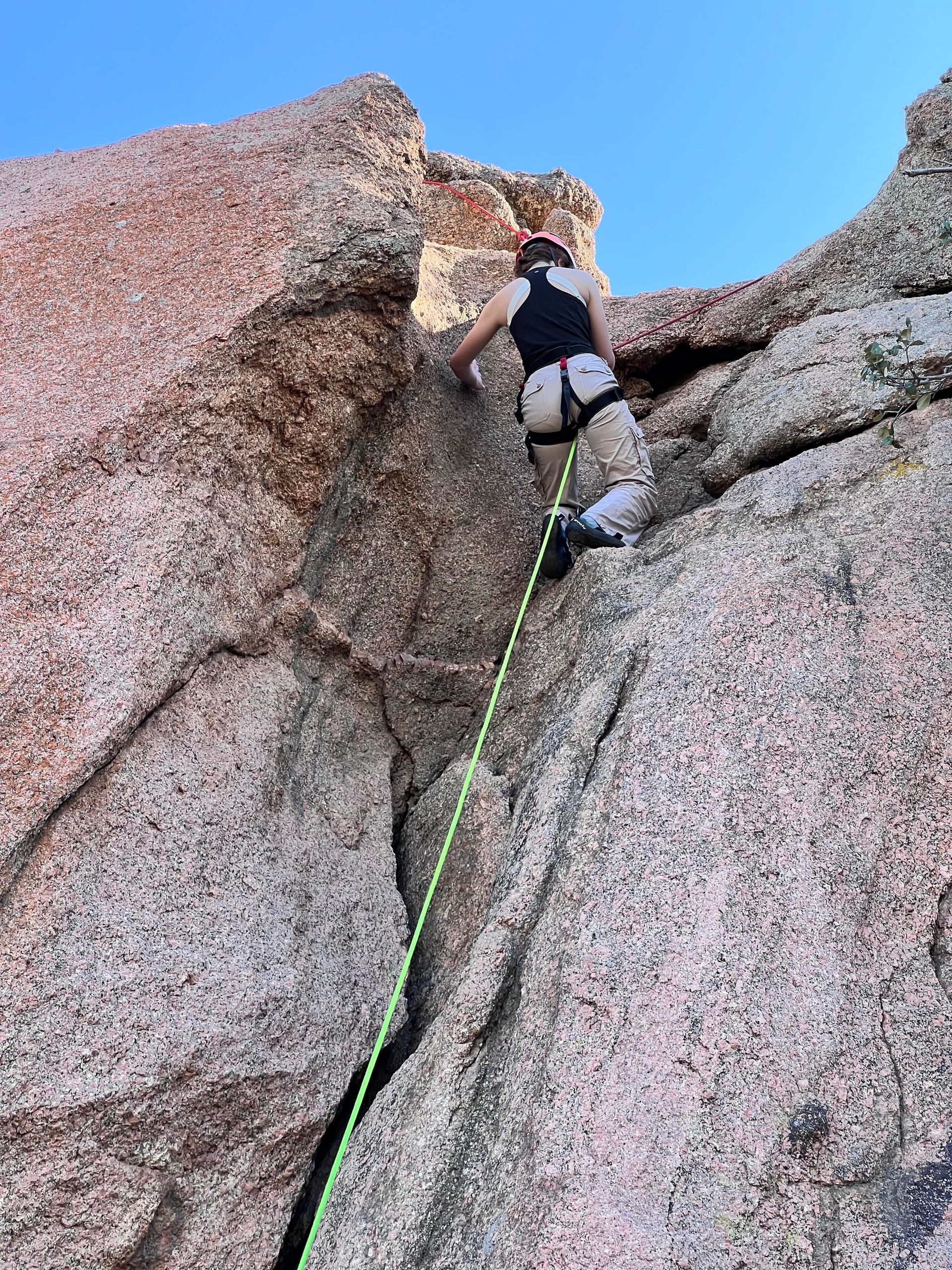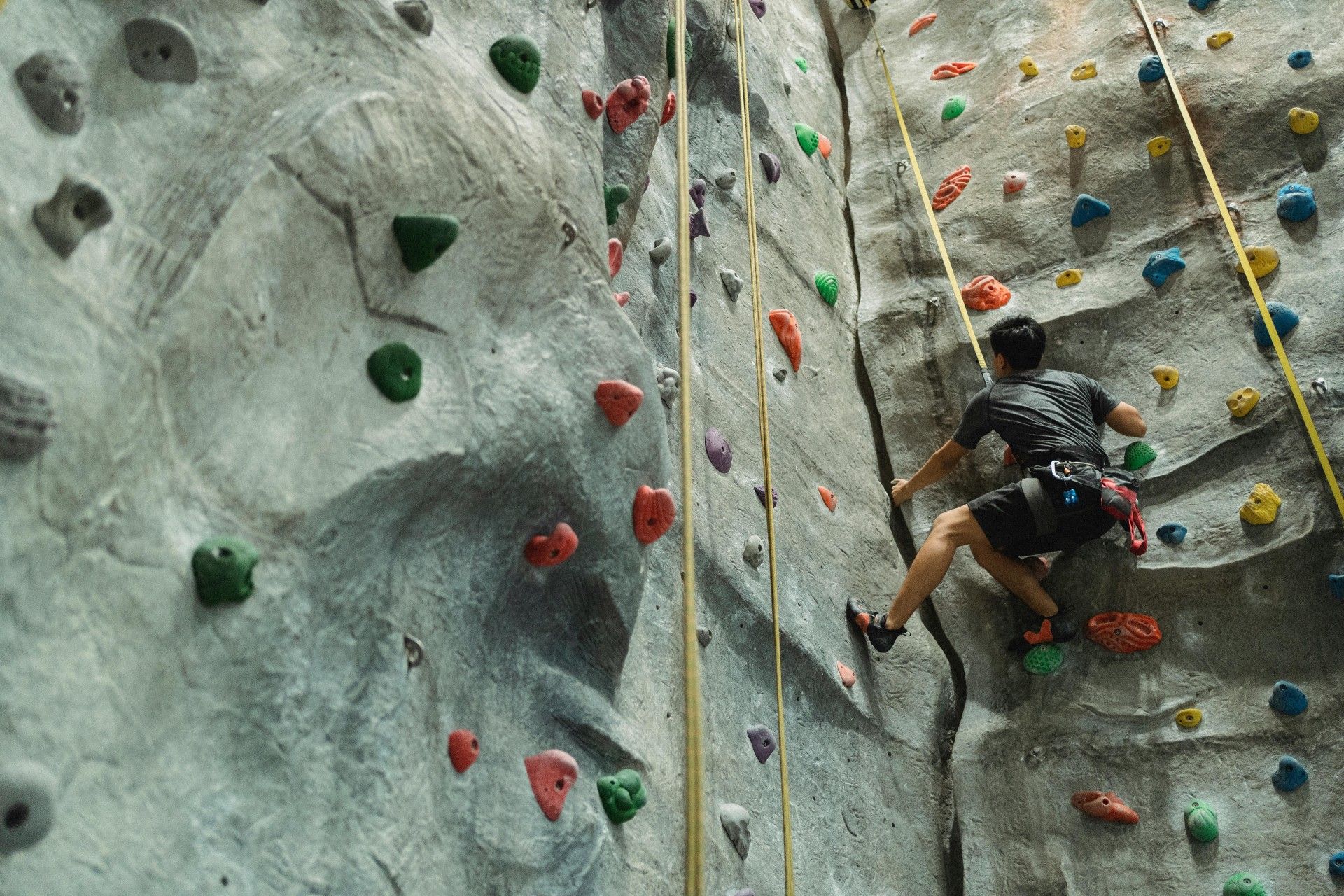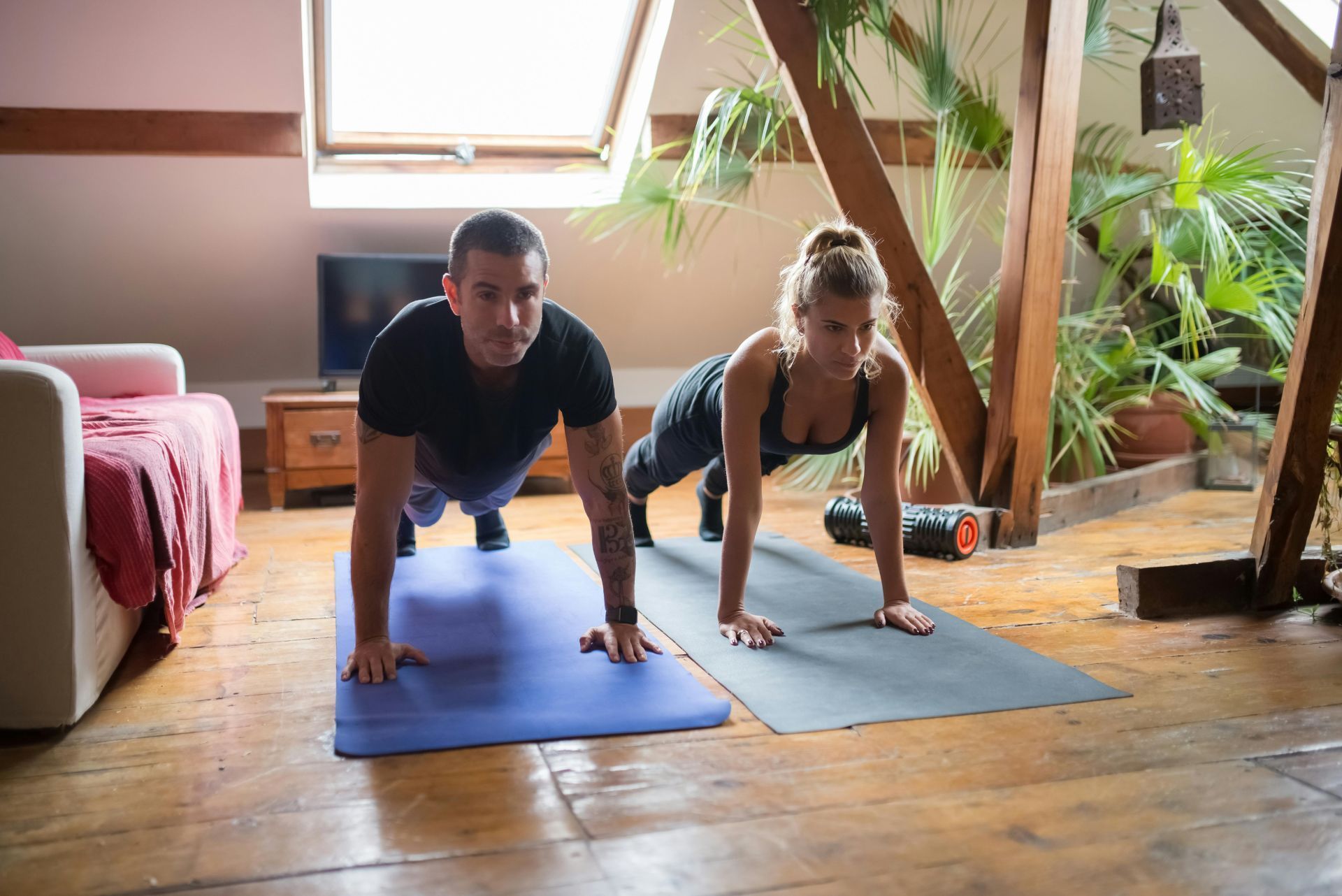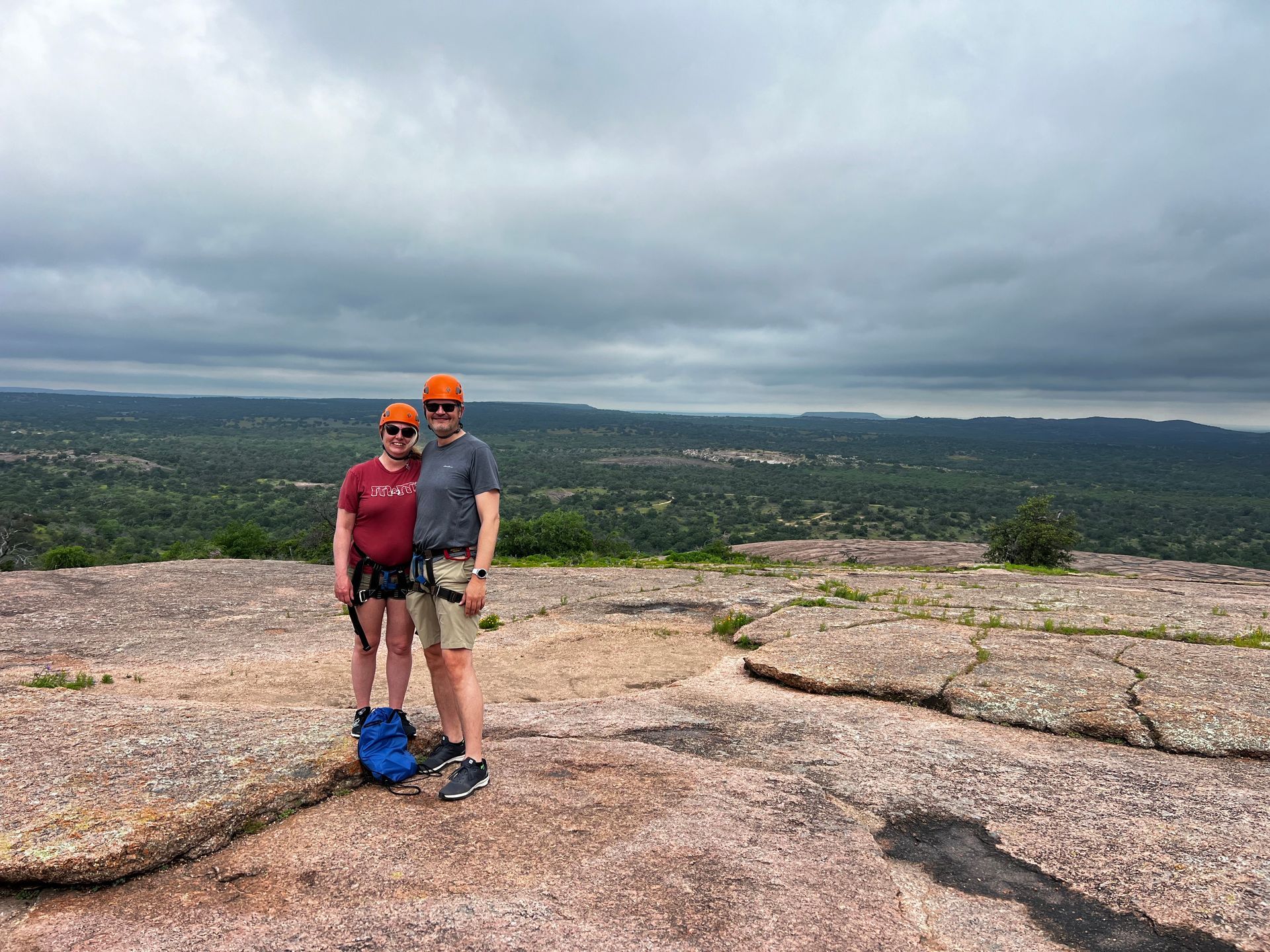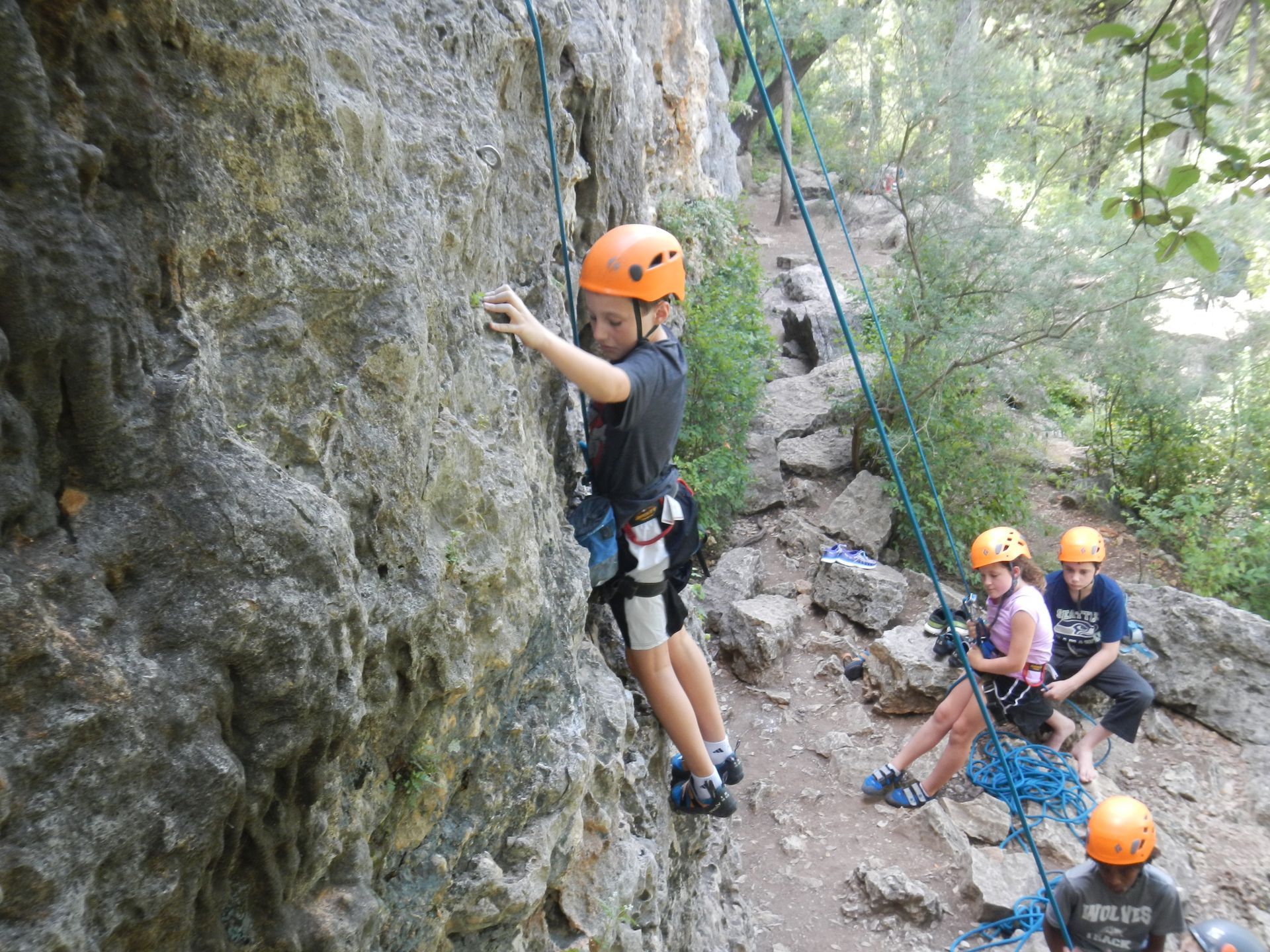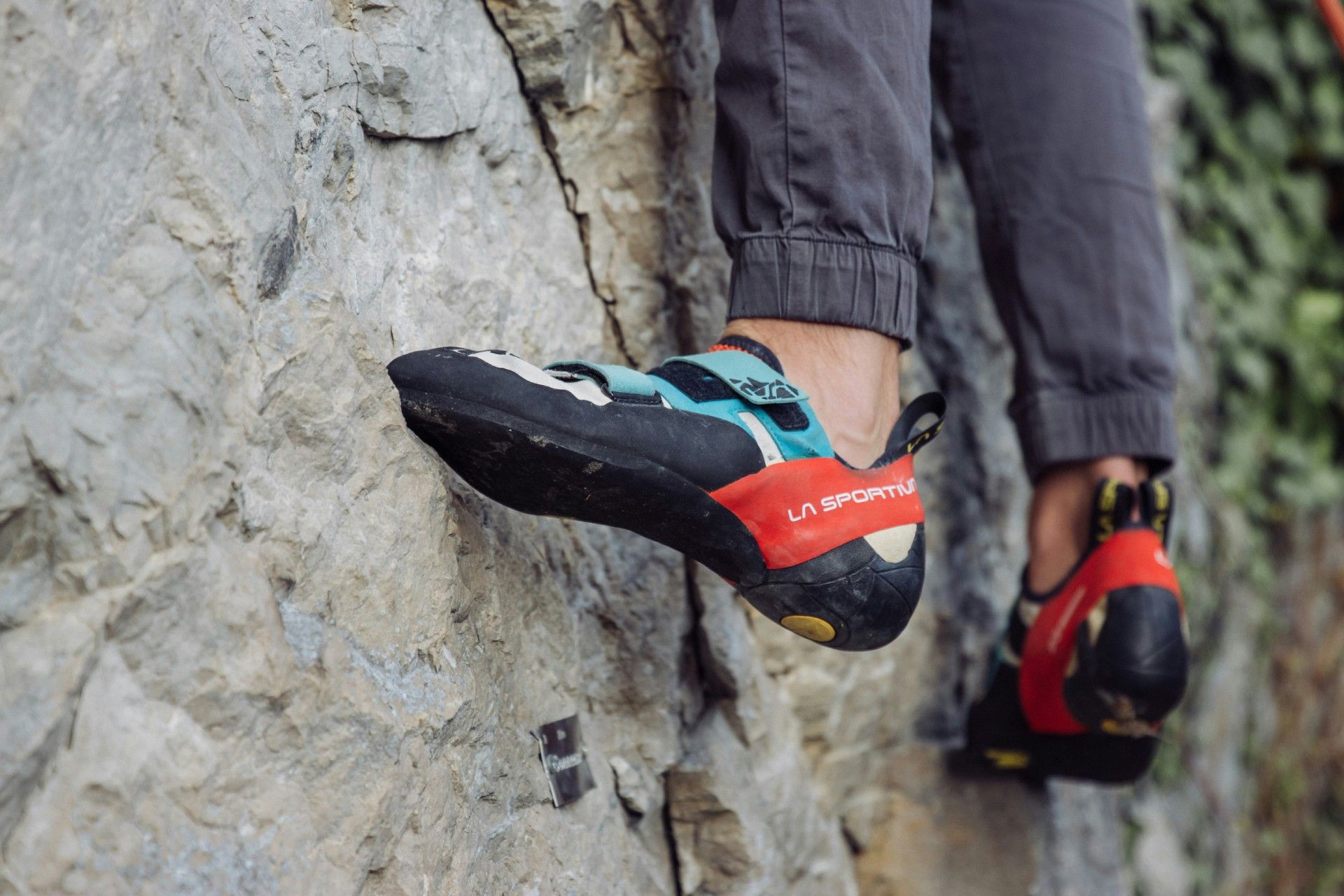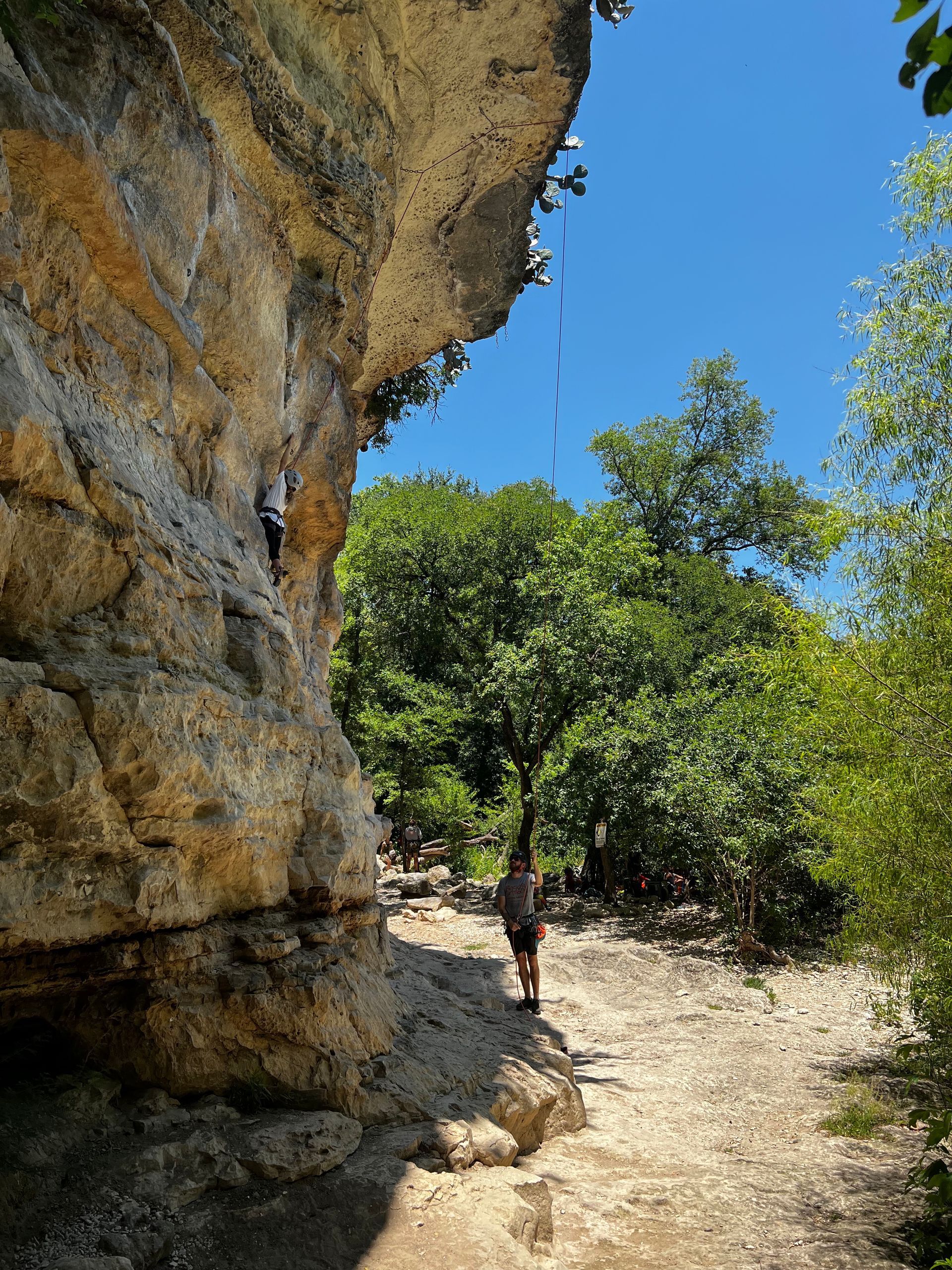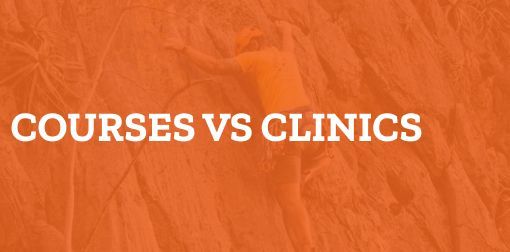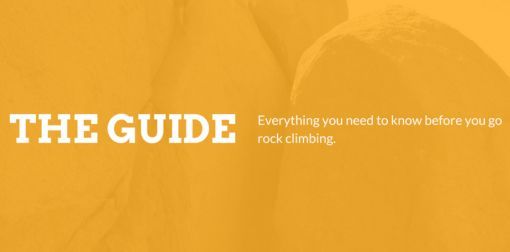Beginner Climbing vs. Advanced Climbing: Learn from Austin’s Experts
Rock climbing is an exhilarating sport that offers both physical and mental challenges. Whether you’re a beginner eager to learn the ropes or an experienced climber looking to take your skills to new heights, Austin’s experts at Rock About can guide you through the journey. We will explore the differences between beginner and advanced climbing, and how Rock About‘s expertise and resources can help climbers at every level improve their skills, build confidence, and safely navigate the vertical world.
Key Takeaways
- Beginner climbing with Rock About focuses on building a safe foundation—teaching essential knots, belaying, and technique in both indoor and outdoor settings across Austin.
- Advanced climbing programs push limits with lead climbing, self-rescue, and anchor systems while offering personalized coaching on challenging routes.
- Rock About prioritizes safety at every level, ensuring all climbers use well-maintained equipment and follow proper risk management practices.
- Austin’s diverse climbing spots, from Barton Creek Greenbelt to Enchanted Rock, give climbers opportunities to progress on varied rock types and formations.
- A supportive climbing community fosters skill development, connection, and camaraderie between beginner and advanced climbers alike.
Beginner Climbing: Building a Solid Foundation
For those new to climbing, building a solid foundation is essential. Rock About provides beginner climbing programs that focus on safety, basic techniques, and fundamental skills. Through guided instruction and hands-on practice, beginners can learn how to tie knots, belay, and navigate the climbing routes.
The expert guides at Rock About prioritize safety, ensuring that beginners are equipped with the knowledge and skills to climb with confidence. They offer introductory climbing sessions at Austin’s iconic outdoor locations, such as the Barton Creek Greenbelt and Reimer’s Ranch, where beginners can experience the thrill of climbing in a supportive environment.
Beginner climbers can also benefit from Rock About’s indoor climbing classes, which provide a controlled and supervised environment for learning climbing techniques, honing strength and endurance, and gaining familiarity with climbing equipment.
Advanced Climbing: Pushing Limits and Scaling New Heights
For climbers who have mastered the basics and seek a greater challenge, Rock About offers advanced climbing programs and courses. These programs focus on refining techniques, developing strength and agility, and expanding climbing skills to tackle more challenging routes.
Advanced climbers can benefit from personalized coaching & guidance from Rock About’s experienced instructors. They provide insights into advanced climbing techniques, route reading, lead climbing, and more.
Climbers have the opportunity to explore Austin’s premier climbing areas, such as the Austin Greenbelt, Enchanted Rock, and the Texas Hill Country, where they can put their skills to the test on a variety of challenging routes.
Rock About’s advanced climbing courses also cover important aspects like risk management, self-rescue techniques, and advanced anchor systems, ensuring that climbers are well-prepared for the demands of more challenging climbs.
Expert Guidance and Safety Measures
Rock About’s team of expert guides & instructors are dedicated to providing a safe and enjoyable climbing experience for climbers of all levels. They prioritize safety through comprehensive instruction on equipment usage, proper belaying techniques, and risk management.
Beginner climbers receive thorough training on essential safety practices, while advanced climbers benefit from specialized instruction on advanced safety protocols.
Rock About’s commitment to safety extends to the maintenance and inspection of climbing equipment. They ensure that all equipment, including ropes, harnesses, and carabiners, is in excellent condition and regularly inspected to meet industry standards.
Access to Austin’s Premier Climbing Areas
One of the advantages of learning from Austin’s experts at Rock About is the opportunity to explore the city’s premier climbing areas. Austin is renowned for its diverse outdoor climbing opportunities, offering a variety of rock types and routes for climbers of all levels.
From limestone cliffs at the Greenbelt to the granite domes at Enchanted Rock, climbers can experience a range of natural formations that present different challenges and rewards. Rock About’s knowledgeable guides can help climbers navigate these unique climbing areas, providing valuable insights and ensuring a memorable experience.
Community and Skill Development
Rock About fosters a sense of community among climbers, creating opportunities for climbers of all levels to connect, learn from each other, and share their passion for the sport. They offer group climbing sessions, workshops, and social events that bring climbers together, promoting skill development and camaraderie.
Beginner climbers can benefit from the support and encouragement of more experienced climbers, while advanced climbers can challenge themselves by exchanging knowledge and techniques with their peers. Rock About’s community-centered approach creates a positive and inclusive environment for climbers to grow and thrive.
Rock-About Climbing Adventures
Rock About, Austin’s premier climbing experts, offer comprehensive programs and courses for both beginner and advanced climbers. Whether you’re just starting your climbing journey or seeking to push your limits, Rock About provides expert guidance, prioritizes safety, and offers access to Austin’s stunning climbing areas.
From building a solid foundation for beginners to refining techniques and tackling challenging routes for advanced climbers, Rock About ensures an exhilarating and fulfilling climbing experience for all. Embark on your climbing adventure with the guidance of Rock About’s experts and discover the thrill of vertical exploration in Austin’s scenic outdoor climbing destinations. Call us to speak with our staff or visit us from Austin, San Antonio, Fredericksburg, or Marble Falls, TX.
Frequently Asked Questions
Here are some common questions about beginner and advanced climbing, with insights from Austin’s climbing experts at Rock About.
What level is a beginner climber?
Beginner climbers are usually in the early grades, around 5.5 to 5.9 on the Yosemite Decimal System or V0–V2 in bouldering. At this stage, the focus is on learning basic safety skills, proper knots, belaying, and movement techniques. Rock About helps beginners build a solid foundation so they can climb with confidence in indoor gyms and outdoor settings.
What climbing grade is considered advanced?
Advanced climbing often starts around 5.10a to 5.11d on roped climbs and V6 to V8 in bouldering. At this level, climbers are refining techniques, improving endurance, and learning advanced skills like lead climbing and self-rescue. Rock About’s advanced courses guide climbers through these challenges safely, offering coaching on technical movement and risk management.
What are the different levels of climbing?
Climbing levels generally progress from beginner (5.0–5.7 or V0–V2), intermediate (5.8–5.9 or V3–V5), advanced (5.10–5.11d or V6–V8), and expert (5.12+ or V9+). Each stage requires new skills and experience. Rock About provides structured programs that allow climbers to progress naturally through these levels while emphasizing safety and technique.
What are the three main types of climbing?
The three most common climbing types are bouldering, sport climbing, and traditional (trad) climbing. Bouldering involves shorter climbs without ropes, sport climbing uses fixed bolts for protection, and trad climbing relies on placing gear in the rock. Rock About offers opportunities to explore these styles across Austin’s diverse outdoor climbing areas.
How do indoor and outdoor climbing differ for beginners?
Indoor climbing provides a controlled, supervised space to learn knots, belaying, and basic movement without environmental challenges. Outdoor climbing adds natural rock features, varied terrain, and environmental factors. Rock About introduces beginners to both, helping them transition smoothly from gym practice to outdoor routes at places like Barton Creek Greenbelt and Reimer’s Ranch.
What skills should beginners focus on first?
Beginners should prioritize knot tying, belaying, climbing techniques, and basic safety practices. Developing balance, footwork, and controlled movement early on builds confidence and reduces injury risk. Rock About’s beginner programs emphasize these fundamentals, ensuring climbers develop safe habits before tackling harder routes.
How do advanced climbing courses differ from beginner ones?
Beginner courses focus on safety basics and foundational skills, while advanced programs introduce lead climbing, anchor systems, route reading, and self-rescue techniques. Rock About’s advanced courses also include personalized coaching, helping climbers refine their technique and tackle challenging climbs in Austin and beyond.
Why is community important in climbing?
Climbing thrives on a supportive community where beginners learn from experienced climbers, and advanced climbers grow by sharing techniques with peers. Rock About fosters this sense of camaraderie through group sessions, workshops, and social events, creating an inclusive environment that encourages skill development and long-term growth.
Where can climbers in Austin practice different levels of climbing?
Austin offers a variety of outdoor spots: the Greenbelt with limestone routes for beginners and intermediates, Reimer’s Ranch for varied sport climbing, and Enchanted Rock with granite domes suited for advanced challenges. Rock About’s guides help climbers of all levels explore these areas safely and effectively.
